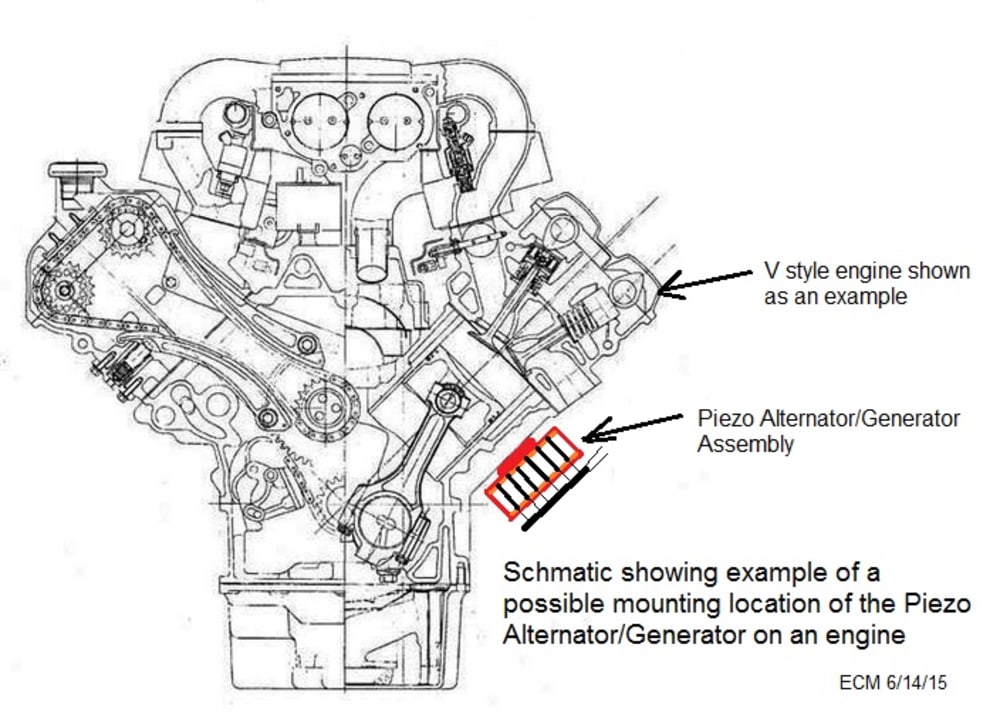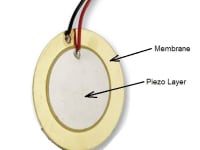Existing alternator design is the most cheap and efficient way of generating voltage to recharge an automotive battery. It is also relatively simple with few moving parts and fairly reliable. The limitation is that it utilizes engine-cranking power to generate voltage reducing engine horsepower and reducing fuel economy.
Instead of using the crank power to turn the alternator a more efficient way to generate power would be to utilize waste energy produced by the engine such as vibrational energy. The engine generates cyclic vibrations from combustion events and internal mechanical motions that are transferred to the engine block. Utilizing this energy instead of crank power could increase fuel economy up to 10% and free up to a few horsepower.
An idea to harness this normally wasted vibrational energy is to use a flexible membrane that has a layer of piezo material attached to it, similar to the construction of a piezo buzzer membrane. This membrane would be mounted within a housing that would be attached to the engine block. As the engine vibration excites the membrane (via the housing) the piezo layer will flex, generating a voltage. The membrane can be tailored to some extent by size, thickness, and material for mechanical resonance’s and maximizing membrane flex.
Piezoelectric material may generate reasonable voltage but the current is very minimal. With this in mind a capacitor would be needed to store the charge as the piezo membrane is generating voltage at some frequency. When the capacitor has reached an attainable voltage it can be discharged to electronics that would condition the voltage signal for use within the vehicle. Additional electronic components would be needed to control the charge/discharge of the capacitor, which will not be disclosed in this design description.
To further, a single piezo membrane and capacitor that will be termed a cell may not be sufficient enough to generate the typically required 14V/110A. To achieve the required power a number of cells can be stacked in a housing that would be shaped like a tube. With the thin relative thickness of the membrane many cells can be stacked in a housing in which the housing can be fairly small to accommodate engine packaging. The required number of cells would be wired together in arrays as either series or parallel as needed to meet the required power output over engine RPM range. The discharge of the cells would be summed and controlled by electronics yielding a voltage signal with a frequency varying with engine RPM. This voltage signal would be conditioned by an external electronic module (voltage regulator) for use within the vehicle such as charging the battery.
The membrane has a small displacement to flex the piezo layer so there are essentially no moving parts potentially making the mechanical design very reliable. The components that go into the piezo alternator/generator are relatively cheap and would utilize standard manufacturing practices, so it is felt that the piezo alternator could compete with the costs and reliability of existing alternator design.
Like this entry?
-
About the Entrant
- Name:Eric Myers
- Type of entry:individual
- Software used for this entry:none
- Patent status:none








